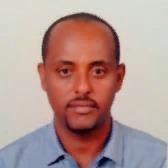International Journal of Image, Graphics and Signal Processing (IJIGSP)
IJIGSP Vol. 9, No. 4, 8 Apr. 2017
Cover page and Table of Contents: PDF (size: 1383KB)
Recognition of Double Sided Amharic Braille Documents
Full Text (PDF, 1383KB), PP.1-9
Views: 0 Downloads: 0
Author(s)
Index Terms
Amharic Braille Recognition, Direction Field Tensor, Double Sided Braille, Recto Dot and Verso Dot Identification, Braille Code Translation
Abstract
Amharic Braille image recognition into a print text is not an easy task because Amharic language has large number of characters requiring corresponding representations in the Braille system. In this paper, we propose a system for recognition of double sided Amharic Braille documents which needs identification of recto, verso and overlapping dots. We used direction field tensor for preprocessing and segmentation of dots from the background. Gradient field is used to identify a dot as recto or verso dots. Overlapping dots are identified using Braille dot attributes (centroid and area). After identification, the dots are grouped into recto and verso pages. Then, we design Braille cell encoding and Braille code translation algorithms to encode dots into a Braille code and Braille codes into a print text, respectively. With the purpose of using the same Braille cell encoding and Braille code translation algorithm, recto page is mirrored about a vertical symmetric line. Moreover, we use the concept of reflection to reverse wrongly scanned Braille documents automatically. The performance of the system is evaluated and we achieve an average dot identification accuracy of 99.3% and translation accuracy of 95.6%.
Cite This Paper
Hassen Seid Ali, Yaregal Assabie,"Recognition of Double Sided Amharic Braille Documents", International Journal of Image, Graphics and Signal Processing(IJIGSP), Vol.9, No.4, pp.1-9, 2017. DOI: 10.5815/ijigsp.2017.04.01
Reference
[1]Miftah Hassen and Yaregal Assabie, "Recognition of Ethiopic Braille Characters," In Proceedings of the 4th International ACM Conference on Management of Emergent Digital Eco Systems, 2012.
[2]A. Antonacopoulos, “Automatic Reading of Braille Documents”. In: H. Bunke, P.S.P. Wang (eds.): Handbook of Character Recognition and Document Image Analysis. World Scientific Publishing Company, pp. 703–728, 1997.
[3]A. Al-Salman, Y. AlOhali, M. AlKanhal and A. AlRajih, "An Arabic Optical Braille Recognition System," in Proceedings of the First International Conference in Information and Communication Technology and Accessibility (ICITA 2007), Hammamet, Tunisia, 2007.
[4]W. Lisa, A. Waleed, and H. Stephan, "A Software Algorithm Prototype for Optical Recognition of Embossed Braille," in the 17th conference of the International Conference in Pattern Recognition, Cambridge, UK, August 2004.
[5]P. Blenkhorn, "A System for Converting Braille into Print," IEEE Transactions on Rehabilitation Engineering, vol. 3, no. 2, pp. 215-221, June 1995.
[6]A. Antonacopoulos and D. Bridson, "A Robust Braille Recognition System," In A. Dengel and S. Marinai (Eds.), Document Analysis Systems VI, Springer Lecture Notes in Computer Science, LNCS 3163, pp. 533-545, 2004.
[7]R. Ritchings, A. Antonacopoulos and D. Drakopoulos, “Analysis of Scanned Braille Documents”, In: A. Dengel and A. Spitz (eds.): Document Analysis Systems, World Scientific Publishing Company, pp. 413–421, 1995.
[8]M. Jiang, X. Zhu, G. Gielen, E. Drábek, Y. Xia, G. Tan and T. Bao, "Braille to print translations of Chinese", Information and Software Technology 44 (2), 91-100, 2002.
[9]N. Falcón, C. Travieso, J. Alonso and M. Ferrer, “Image Processing Techniques for Braille Writing Recognition”, EUROCAST, LNCS3643, pp. 379-385, 2005.
[10]A. Al-Saleh, A. El-Zaart and A. AlSalman, “Dot Detection of Optical Braille Images for Braille Cells Recognition” ICCHP2008, LNCS 5105, pp. 821–826, 2008.
[11]C. Ng, V. Ng, and Y. Lau, "Regular Feature Extraction for Recognition of Braille," In Proceedings of 3rd International Conference on Computational Intelligence and Multimedia Applications, ICCIMA'99, 1999.
[12]J. Bhattacharya and S. Majumder, “Braille Character Recognition using Generalized Feature Vector Approach”, Computer Networks and Intelligent Computing, Springer, pp. 171-180, 2011.
[13]Berihun Girma., "The Educational Situation of the Blind," Center for educational staff development, Addis Ababa, EThiopia, 1994.
[14]G. Franćois and P. Calders, "The reproduction of Braille originals by means of Optical Pattern Recognition", Proc. 5th Int. Workshop on Computerized Braille Production, Heverlee, pp. 119-122, 1985
[15]J. Mennens, L. Tichelen, G. Francois and J. Engelen, “Optical Recognition of Braille Writing Using Standard Equipment”, IEEE Transactions of Rehabilitation Engineering, 2(4): 207-212, 1994.
[16]M. Yousefi, M. Famouri, B. Nasihatkon, Z. Azimifar and P. Fieguth, “A robust probabilistic Braille recognition system”, International Journal on Document Analysis and Recognition , 15: 253, 2012.
[17]S Al-Shamma and S. Fathi, "Arabic Braille Recognition and Transcription into Text and Voice", In proceedings of 5th Cairo International Biomedical Engineering Conference Cairo, Egypt, pp 227-231, 2010.
[18]T. Shreekanth and V. Udayashankara, "A New Research Resource for Optical Recognition of Embossed and Hand-Punched Hindi Devanagari Braille Characters: Bharati Braille Bank", IJIGSP, vol.7, no.6, pp.19-28, 2015.
[19]J. Bigun, T. Bigun and K. Nilsson, "Recognition by Symmetry Derivatives and the Generalized Structure Tensor," IEEE TPAMI 26 (2), pp. 1590-1605, 2004.
[20]M. Lewis, G. Simons and C. Fennig, Ethnologue: Languages of the World, Seventeenth edition. Dallas, Texas: SIL International, 2013.
[21]Special Education Team, “Braille Teaching Guide (in Amharic)”, Curriculum Development and Reearch Institute of Ethiopia, Addis Ababa, Ethiopia, 1998.
[22]Yaregal Assabie and J. Bigun, "Offline Handwritten Amharic Word Recognition," Pattern Recognition Letters, 32 (2011), pp. 1089-1099, 2011.
[23]S. Thorstein, "CIE Div 1, R1-47 Hue angles of Elementary Colours," International Commission on Illumination-CIE, Norway, 2004.

